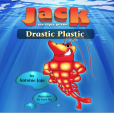A closer look at the scientific power of nuclear and accelerator techniques
In Part 2 of our series exploring the world of nuclear science and technology at ANSTO, we share more detailed information about the nuclear scientist’s toolkit.

Showing 81 - 100 of 286 results
In Part 2 of our series exploring the world of nuclear science and technology at ANSTO, we share more detailed information about the nuclear scientist’s toolkit.

International collaboration uses cryo-electron tomography to determine the structure of a complex responsible for sorting and delivering cellular cargo.

Biosciences staff support research for radiopharmaceutical translation, radiation biology and radiotracer studies. New radiotracers can be fully characterised and assessed by a range of evaluation techniques, including in vitro and in vivo studies.
Think Science! 2023 Summary and Results

Project members of Magnetism.
The use of radioisotopes, radiolabeled molecules and radioactive particles in conjunction with a range of quantitative imaging spectroscopy and radiation counting methods.

The Imaging and Medical beamline (IMBL) is a flagship beamline of the Australian Synchrotron built with considerable support from the NHMRC. It is one of only a few of its type, and delivers the world’s widest synchrotron x-ray ‘beam’.
ANSTO's Melbourne location is home to the ANSTO-owned and operated Australian Synchrotron. The Synchrotron is one of the Australia's most significant pieces of scientific infrastructure.
Research on lunar meteorite and moon crater analogues coincides with Science Week.

Jack the Super Prawn lives in the Great Barrier Reef and uses his superpowers to protect the environment. Jack’s main job is to educate young readers on the impact of plastic and other types of pollution and to empower them to find a solution.
Created by Antoine Jaja, Jack’s first two adventure books entitled, “Drastic Plastic” and “Pollution Solution,” are now available in paperback in bookstores throughout Australia, as well as the ANSTO Shop. ANSTO provided scientific input into these stories that are helping to raise awareness of the impact of pollution on our waterways and the marine environment.

Sample environments and Data analysis

Beamtime guide on the SAX / WAXS beamline at the Australian Synchrotron.
Jack the Super Prawn lives in the Barrier Reef and uses his powers to protect the environment. With JackVac, he cleans up rubbish and impurities in seawater. With JackCopter, he soars high into the air, where you wouldn't normally see a prawn. Of course, powers like that help Jack find and clear up waste plastic. But Jack's main job is to educate young readers.

ANSTO has been using Ion Beam Analysis (IBA) techniques to analyse fine particle pollution samples collected from key sites around Australia, and internationally, for more than 20 years.